Menu
I have always been very thankful my youngest son, Ciaran, followed the Save our Sleep routine, firstly because it’s what I do, but also because it saved his little toe from toe tourniquet!
When he was extremely unsettled one afternoon, I knew straight away that something must be wrong. That’s the benefit of being on a good routine, you spot the changes instantly.
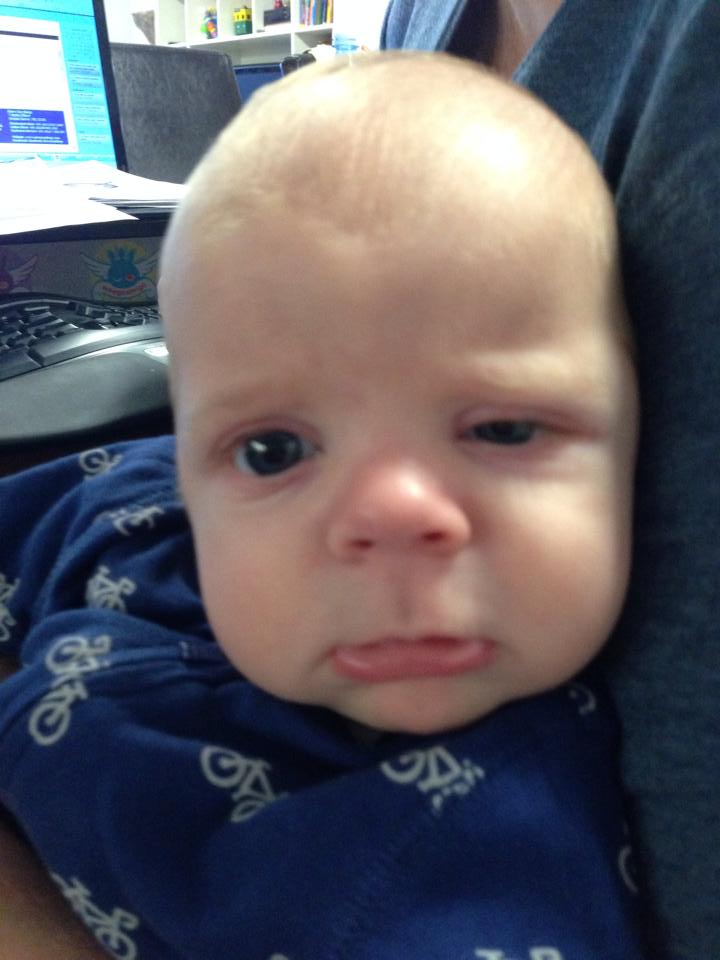
Ciaran was very unsettled so I stripped him off, checked him from head to foot, but didn’t find anything the first time. But on the second check, I found one of my hairs wrapped around his tiny toe.
We called in a paramedic friend who was nearby, and was confident she could remove it, but sadly she had no luck. A more senior paramedic colleague was also unsuccessful, and suggested we go to hospital, as little Ciaran’s toe was now turning blue.
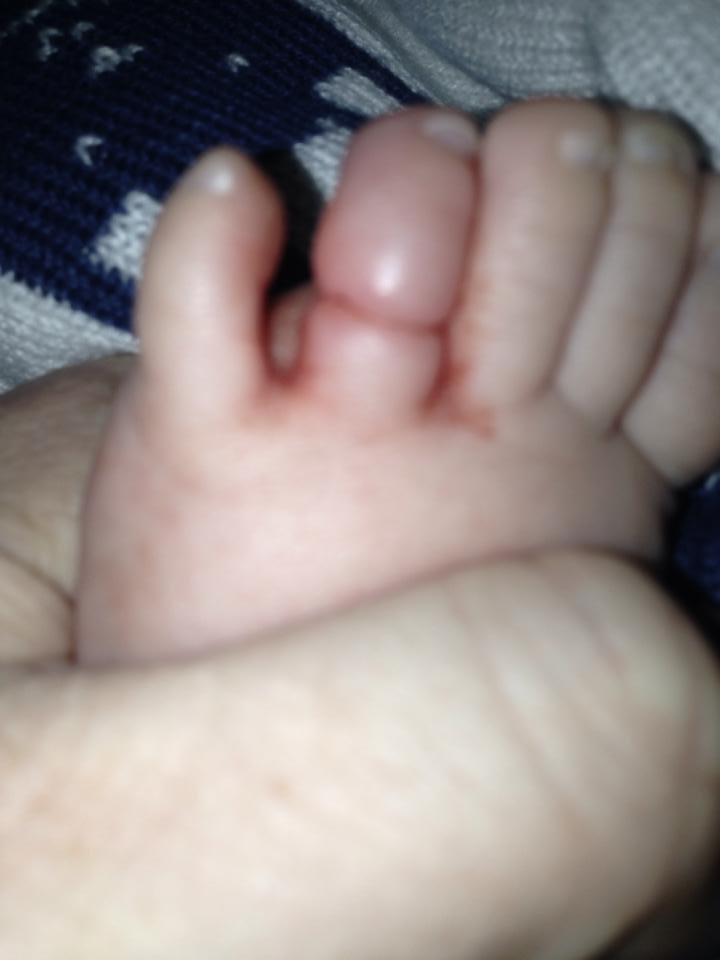
Arriving at the emergency, we were taken to a procedure room and seen by staff who were confident they’d have the hair off in a few minutes. After initial attempts were unsuccessful, it was decided that a numbing cream should be applied to give the staff a better chance of success. After numerous attempts by increasingly more senior doctors, a plastic surgeon was called in and the possibility of an operation under general anaesthetic was discussed.
Fortunately, the plastic surgeon was eventually able to remove the hair with just the use of a local anaesthetic, but Ciarán and I were kept in hospital overnight for observation and needed to follow up with the surgeon to ensure that circulation was fully restored to the toe. Thankfully he was totally fine!
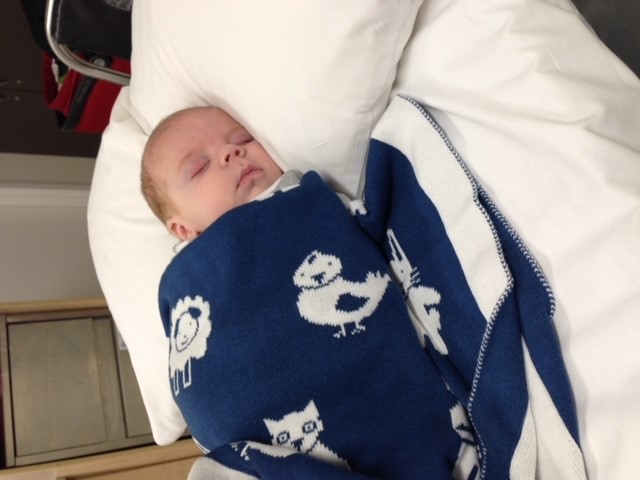
I shared the story on my Facebook page at the time to warn other parents of the real danger.
We probably can’t stop it happening all altogether, but I do want to make people aware that they need to treat it seriously.
While it isn’t possible to completely prevent toe tourniquet problem, the risks can be mitigated.
Most importantly, trust your gut. If your instinct tells you that something is wrong with your baby, check them. Check every little bit of them.
Don’t be paranoid parents. Try to avoid it, but if it happens, don’t wait, get treatment. The longer you leave it, the more serious it gets.
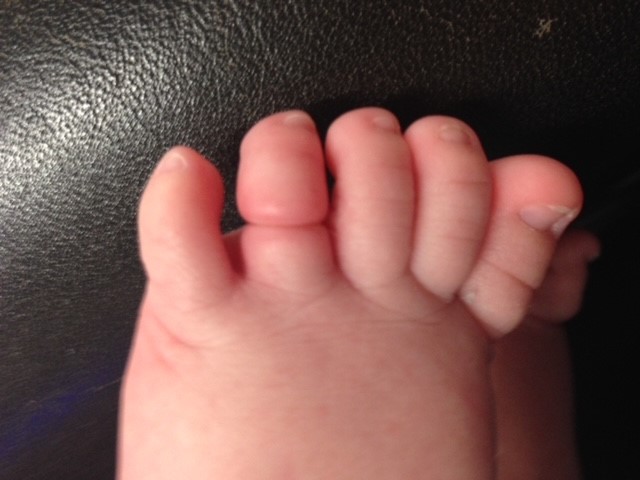
Hair tourniquet is a condition where a strand of hair or thread of cotton becomes tightly wrapped around most commonly a toe, and occasionally a finger, genitals, or other body parts. This results in pain and swelling of the affected part. Complications can include tissue death due to lack of blood flow.
Most children who suffer from toe tourniquet syndrome are between the ages of four days to 19 months old and usually present to doctors inconsolably crying and in obvious pain and distress.
Your little one will be very unhappy and inconsolable, including excessive crying and irritability.
You may notice redness or swelling on a finger, toe or another body part. The area may be tender and cause pain and discomfort.
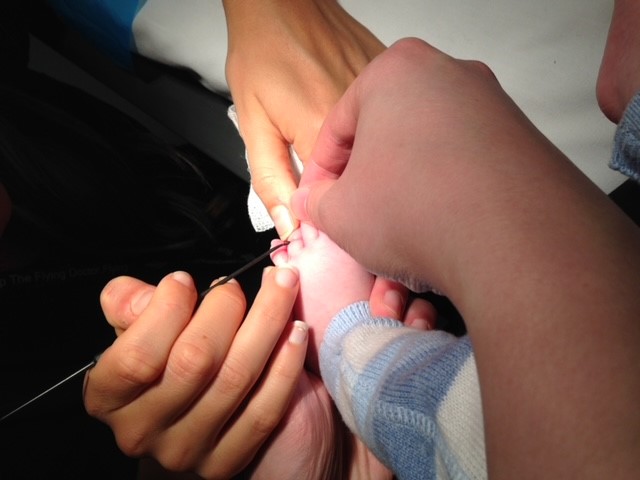
I suggest you avoid using socks on babies and that onesies should be the preferred option. However, some babies – like Ciarán – have such long legs that onesies don’t fit and in those circumstances, socks might be needed. If you are using socks, always check the inside for loose threads and hairs.
Tips for toe tourniquet
Firstly please remember don’t wait to get treatment if it looks like circulation is at risk. The longer you leave it, the more serious it gets.
You can try to unwind the hair yourself or use a blunt object to help enable you to snip the hair and remove it.
Another great trick is to try hair removal cream. Apply the cream on the area and wait 10 mins for the hair to easily break away. (only if circulation is looking OK still of course!)
I wish I had known the hair removal cream tip 9 years ago. I could have used hair removal cream, yes it is a chemical but it would have been faster and easier than an overnight stay in the hospital.
Prevention
You can prevent hair tourniquet syndrome by being aware of the condition.
If you’ve recently had a baby, you may notice an increase in hair loss. Make sure you take steps to reduce your baby’s contact with loose hairs.
Also avoid dressing your baby in mittens and older clothing that may have loose threads. If your baby likes to pull on your hair, gently direct their attention to a toy or another object.
Remember when your baby is following the Save our sleep routine they are also safer and happier, as you will notice much quicker when there is a problem and something is not usual behaviour for them.
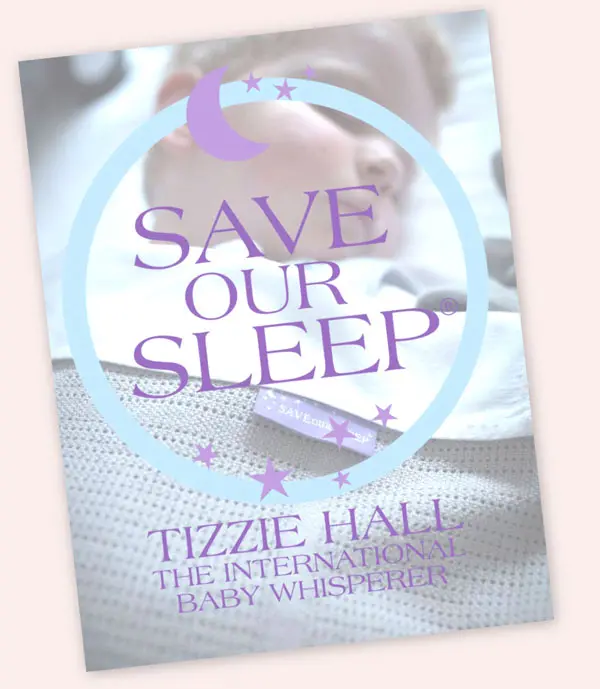
Join our newsletter and receive a FREE download of the world famous Save Our Sleep Safe Bedding Guide delivered straight to your inbox!
PLUS you will also receive a thank you gift offer shortly after.